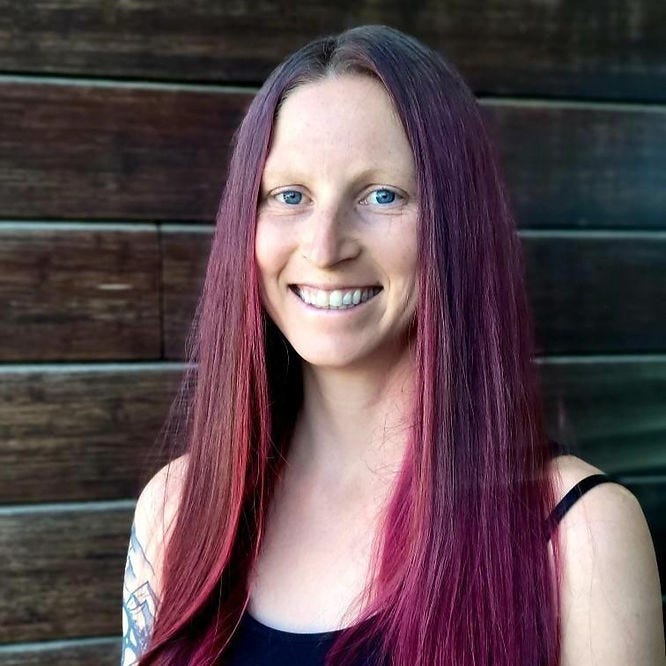

Discover more from Harmony
3 Conversations On Navigating The First Product Manager Role At Startups
Insights From Stefan Dorfling, Bahador Saket, And Amanda Unterreiner
Stepping into the role of a startup’s first product manager was both exciting and challenging for me in 2024. To better prepare, I spoke with 3 experienced professionals who had similar experiences:
Stefan emphasized balancing founder expectations with product integrity.
Bahador highlighted the importance of role clarity and technical understanding.
Amanda shared strategies on setting boundaries and handling disagreements.
They shared valuable lessons to navigate the role of a startup’s first product manager.
I learned tips to:
Balance founder expectations and product integrity
Define and adjust your role
Manage user feedback with stakeholders
Address technical and growth challenges
Handle workload, boundaries, and disagreements
Align strategy and apply frameworks
I spend 44 minutes writing this blog. You need 4 minutes to read this.
I first published this on www.harshal-patil.com on Oct 28, 2024.
Related
Podcast: Navigating the First Product Manager Role at Startups | Amanda Unterreiner (2x lead PM, Xoogler) 6 Tactics To Accelerate Your On-The-Job Product Management Learning Curve
Unique Position Of A Startup’s First Product Manager
As the first product manager, you're not just stepping into a role; you’re shaping it. In established organizations, product management roles are well-defined. But you must create this definition in a startup.
Although an ideal product manager role might focus on a niche, in a startup, you need to be broad. You’ll likely take on tasks like sales, marketing, customer support, and project management in an early-stage company. This means when you define your responsibilities, you might need to be broad.
Additionally, your engineering colleagues are not used to working with a Product Manager in this company. How do you bring value to them, instead of taking up their time to learn about the company context?
Meet Stefan, Bahador, And Amanda
Stefan Dorfling has 5+ years of product management experience and is a PM at NUMA in Berlin. Originally from South Africa, he transitioned from law to product management. He led cross-functional teams in diverse industries - from financial services in a bank to consulting with Product People. As the first PM at several startups, Stefan learned to align goals and navigate challenges. I met Stefan when he hosted a Product People event in Dublin, Ireland.
Bahador Saket is a product manager passionate about AI and data visualization. With a PhD from Georgia Tech, he has developed visual data analysis tools in healthcare, biology, and security. Early in his career, he worked as an engineer at Microsoft and MathWorks. He was a founding PM at Ponder Data. Now at Suki in Redwood City, he leads the Developer Platform, developing APIs and SDKs to provide healthcare AI and voice technology.
Amanda Unterreiner is a SaaS product leader with 10+ years of experience. She has experience with large companies, such as Google and Wellington management. She has also been part of startups, including Kazoo, Instant Teams, and TaxCredible. Speaking from first-hand experience in Los Angeles, her home-cooked meals are to die for.
1 - Balance Founder Expectations And Product Integrity
Founders often have strong, evolving ideas about the product’s direction. As the first PM, balancing their expectations while maintaining a coherent strategy is crucial.
Stefan highlighted the challenge of navigating founder expectations without compromising the product's strategic direction. He emphasized the importance of understanding the ‘why’ behind founders' requests. You may need to push back respectfully, asking critical questions to ensure features align with the overall strategy.
I found How to communicate tradeoffs so leaders will listen by Tara Seshan relevant.
2 - Define And Adjust Your Role
In a startup, roles are fluid, and product management can be unclear, especially if others don’t fully understand the PM role.
Stefan and Bahador highlighted the need to clarify and redefine your role over time. Set clear expectations with leadership but remain adaptable to other tasks like project management or customer support.
Do regular check-ins with leadership to evolve your role with the company.
In another post, I’ll share my approach to defining the Product Manager role.
3 - Manage User Feedback With Stakeholders
Balancing feedback from customers and teams can be tough, especially when different stakeholders have competing priorities.
Stefan shared a method for turning feedback into actionable insights. Establish a structured process to gather data, such as customer interviews and analytics tools. Present this feedback to leadership to guide product decisions.
I found HeyMarvin helpful for customer interviews and Metabase/Looker for Analytics.
I found A PM’s guide to influence - by Jules Walter relevant.
4 - Address Technical And Growth Challenges
Understanding user needs and technical limitations can be difficult for complex products. Scaling the product also presents challenges.
Bahador recommended building strong relationships with the technical team. Speaking their language helps you make informed decisions and agree on realistic timelines. This will help you scale the product to meet customer needs.
I wrote more on ramp-up in 6 Tactics To Accelerate Your On-The-Job Product Management Learning Curve.
5 - Handle Workload, Boundaries, And Disagreements
Managing a heavy workload and navigating disagreements with founders in a high-pressure startup can lead to burnout.
Amanda stressed the importance of setting boundaries. Define your working hours to avoid burnout.
For founder disagreements, build consensus with other leaders before presenting your case. This ensures your position has broader support and helps avoid conflict.
I captured more learnings from Amanda at Podcast: Navigating the First Product Manager Role at Startups | Amanda Unterreiner (2x lead PM, Xoogler).
I am still figuring this out at Premortem Of My Full-Time Startup PM Job in 2024.
6 - Align Strategy And Apply Frameworks
It’s easy to chase short-term wins by adding features, but long-term success requires alignment with the overall product strategy.
Stefan recommended using frameworks like the Kano model to assess features against business goals. Regularly review the roadmap to ensure it aligns with customer needs and company objectives. This keeps the product on track and avoids misalignment.
I found the recent post Crossing the Chasm: The Ultimate Guide For PMs relevant.
Related
Podcast: Navigating the First Product Manager Role at Startups | Amanda Unterreiner (2x lead PM, Xoogler) 6 Tactics To Accelerate Your On-The-Job Product Management Learning Curve
I first published this on www.harshal-patil.com on Oct 28, 2024.














